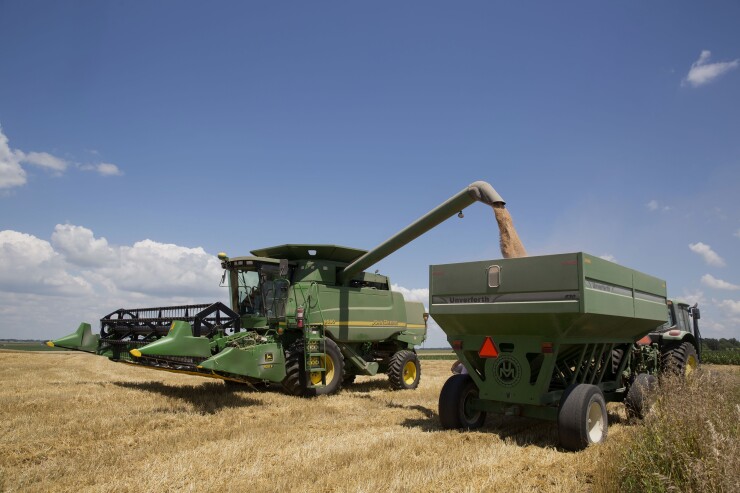Fallout from festering inflation and rapidly rising interest rates are leading concerns for agriculture lenders heading into 2023, given that both threaten to pinch borrowers, crimp loan demand and weaken rural economies.
Such are the key takeaways from a series of survey results released this month aimed at sizing up sentiment of bankers who lend to farmers and the ag-related businesses that work with them, including fertilizer suppliers and equipment manufacturers.
The Federal Reserve has
The American Bankers Association's annual

"Given the Fed's clear signal that it expects to continue raising rates until inflation is contained, it's fitting that ag lenders cited interest rate volatility as their number one concern," said ABA Chief Economist Sayee Srinivasan. "Lenders expect that both short-term and long-term rates will continue to rise in the coming year, reflecting market expectations that rates could rise by another 100-150 basis points by the end of the first quarter of 2023."
Other than interest rates, ag lenders' top concerns are weaker loan demand, intensifying competition, and the potential for credit quality deterioration, according to the ABA's report, which was produced jointly with the Federal Agricultural Mortgage Corp.
More than 35% of bankers rated fading loan demand as a top concern, while 33% ranked competition as a leading worry. Credit quality was ranked among the top two concerns for 21% of respondents.
Though credit quality remained excellent across the banking industry this year, "it is to be expected that lenders would anticipate some deterioration in the coming year as the potential for a downturn grows," Srinivasan said.
Rural economies are particularly vulnerable to an inflation-induced recession, according to Ernest Goss, an economist at Creighton University in Omaha, Nebraska, who surveys bankers each month. In the results of his October poll covering the 10-state central U.S. region that encompasses the Midwest farm belt, Goss found that bankers predicted flagging economic conditions for the sixth time in the past seven months.
Creighton's
Bankers cited higher borrowing costs and elevated agriculture input expenses — such as seed and fertilizer — as key stresses.
Purdue University's
"Concern over rising interest rates grew once again in October and is adding to the unease among producers who are worried about its impact on their farm operations," said James Mintert, head of Purdue's Center for Commercial Agriculture.
Commodity prices also have also been volatile even as overall inflation persists, driving up costs and threatening to curtail profits.
"Many of America's farmers and ranchers experienced a strong recovery in 2021 and 2022" from the depths of the pandemic, "driven by higher commodity prices and robust sales," said Jackson Takach, chief economist at Farmer Mac.
With those tailwinds receding, "ag lenders are keeping a close eye on expenses, as feed, fertilizer, fuel and other input costs remain elevated," Takach said.






